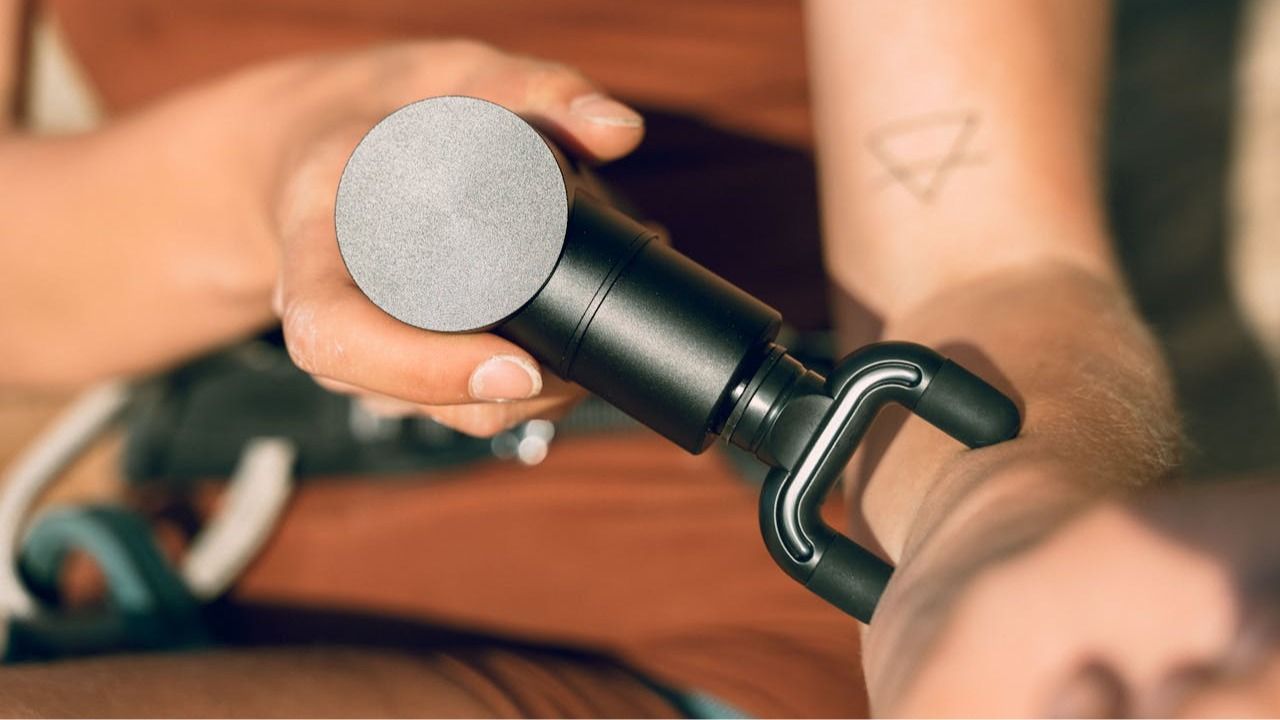Back massage techniques: Instructions & benefits
These 9 types of massage will depend on personal preference and the type of relief you’re seeking. Choose the best one for your needs!
Have you ever felt that stubborn knot in your back that just refuses to unwind, no matter how much you stretch or twist? We've all been there, haven't we? Whether it's from long hours at a desk, an overenthusiastic gym session, or the trials of everyday life, back pain can be a real nuisance.
In this article, we're diving into the soothing world of back massage techniques. Not only will we explore how to perform these techniques safely at home, but we'll also uncover the incredible benefits they offer. From easing muscle tension to enhancing overall well-being, a good back massage can be a game changer.
So, grab a comfy spot and let's unravel the secrets to relieving that back pain, shall we? Whether you're a complete beginner or looking to refine your skills, this guide is tailored just for you.
.jpg)
Source: Racool_studio on Freepik
Instructions
Ready to begin your journey into back massage? First, let’s set the stage for a relaxing experience. Ensure the room is warm and inviting, perhaps with some soft music or dim lighting to create a soothing ambiance. Have your recipient lie down on a firm yet comfortable surface, like a yoga mat on the floor.
1. Start with a clean slate
Make sure your hands are warm and clean, and if you like, use a mild, unscented oil or lotion to help your hands glide smoothly over the skin.
2. Warming up the muscles
Begin with gentle, broad strokes from the lower back upwards towards the shoulders. This technique, known as effleurage, helps to warm the muscles and prepare them for deeper pressure.
3. Applying the techniques
After warming up, move on to specific techniques. Use your thumbs to make small circles along the spine. This helps to release tension directly along the back. Be careful to avoid pressing directly on the spine; focus on the muscles just beside it.
4. Increasing pressure gradually
As the muscles begin to relax, gradually increase the pressure, ensuring that it is comfortable for the recipient. Ask for feedback as you go to make sure the pressure is not too intense.
5. Focus on problematic areas
If there are particular areas of tension, spend a bit more time there. Techniques like kneading or using your elbows gently can help release these stubborn knots.
6. Finishing touches
Conclude the massage with light, soothing strokes that signal the body to relax. This closing sequence can be as calming as the opening, leaving the recipient feeling thoroughly relaxed.
Remember, the key to an effective back massage is consistency and responsiveness. Pay attention to the reactions of the person you're massaging and adjust your technique accordingly. With these steps, you're well on your way to providing a comforting and effective back massage.
.jpg)
Source: Prostooleh on Freepik
Techniques
Exploring different back massage techniques can significantly enhance your approach to relieving back pain. Whether you're looking to alleviate discomfort or simply unwind after a stressful day, understanding the various methods available—and which are suitable for home use—can help you make the best choices for your needs.
1. Therapeutic massage
This broad category includes any massage that targets specific areas of the body to alleviate pain and discomfort. At home, you can perform basic therapeutic massages by focusing on areas that feel tight or sore, using gentle pressure and movements to help relax the muscles.
2. Deep tissue massage
Best left to the professionals, deep tissue massage involves applying sustained pressure using slow, deep strokes to target the inner layers of your muscles and connective tissues. This helps to break up scar tissue and reduce tension in muscle and tissue.
3. Swedish massage
A perfect option for beginners and those looking for relaxation, Swedish massage is gentler than deep tissue massage. It involves a combination of long, gliding strokes, kneading, and circular movements, as well as light tapping and vibration to help relax and energize your body.
4. Sports massage
Tailored for athletes, this type of massage focuses on areas of the body that are overused and stressed from repetitive and often aggressive movements. It is designed to prevent and treat injuries and to enhance athletic performance. At home, simple sports massage techniques can be applied to help maintain muscle health and flexibility.
5. Shiatsu massage
Originating from Japan, Shiatsu involves rhythmic pressure along the body's energy pathways, known as meridians. This technique is used to stimulate the body's natural healing capabilities and is characterized by the application of pressure using thumbs, hands, elbows, knees, and feet. This can be adapted at home to simpler hand pressure techniques, focusing on relaxation and energy flow.
Benefits
The benefits of back massage extend far beyond just soothing momentarily achy muscles—they can contribute to long-term health and wellness. Here’s how regularly integrating back massage into your routine can be a game changer for both body and mind.
1. Reduces lower back pain
Regular back massages target the root of most daily discomfort—muscle tension. By relaxing these muscles, massage can reduce pain caused by strain or overuse, making it an excellent option for chronic pain management.
2. Improves circulation
The techniques used in back massages, such as kneading and stroking, help to increase blood flow to the tissues. This enhanced circulation brings oxygen and nutrients to the muscles and organs, which can speed up healing from injuries and reduce fatigue.
3. Enhances flexibility
Massaging the back helps to loosen tight muscles and increase range of motion. For those who sit for long periods or engage in physical activity, this can help prevent injuries and improve overall mobility.
4. Promotes better sleep
The relaxing effects of a good back massage can help improve sleep quality. It does this by reducing pain and anxiety, which often interfere with sleep. Regular sessions can help recalibrate your body’s sleep-wake cycle, contributing to deeper, more restorative sleep.
5. Boosts immune system
Studies have shown that regular massages can boost the immune system by increasing the activity level of the body’s natural killer cells. Massage helps in flushing out toxins and increasing the circulation of lymph, the fluid that carries immune cells throughout the body, thus enhancing your body's ability to fight off illnesses.
6. Reduces stress and anxiety
The soothing power of touch has been shown to lower stress levels, reducing the production of stress hormones like cortisol and increasing serotonin and dopamine levels in the brain. This can help alleviate feelings of anxiety and promote a sense of well-being.
.jpg)
Source: Pexels
Causes of pain
Understanding the various causes of back pain is crucial for effectively addressing and managing this common complaint. While back pain can arise from complex internal issues, many of the causes are related to our everyday activities and habits. Here’s a look at some of the primary culprits:
1. Poor posture
One of the most frequent contributors to back pain is poor posture. Slouching at your desk, standing improperly, or consistently leaning to one side can put undue stress on the spine and muscles, leading to discomfort and pain over time.
2. Overuse or strain
Engaging in repetitive movements or lifting heavy objects improperly can strain muscles and ligaments in the back. This is often seen in individuals who engage in strenuous physical activities without adequate training or those who perform repetitive tasks at work.
3. Enhances flexibility
Massaging the back helps to loosen tight muscles and increase range of motion. For those who sit for long periods or engage in physical activity, this can help prevent injuries and improve overall mobility.
4. Injury
Accidents, such as falls or impacts in sports, can cause acute injuries that lead to back pain. These injuries can range from mild muscle sprains to severe issues like fractures or herniated discs.
5. Stress
Emotional stress can manifest physically in various ways, including causing muscle tension in the back. This tension, if sustained over time, can lead to significant pain and discomfort.
6. Vitamin deficiencies
Important nutrients like Vitamin B12, Vitamin C and Vitamin D play a major role in preventing back pain – especially when you take vitamins for sciatica pain. Ensuring a balanced diet can also help address these deficiencies.
.jpg)
Source: Pexels
When to see a professional masseuse?
While many minor back pains and stresses can be alleviated with home remedies and simple massage techniques, there are situations where it's prudent to seek the expertise of a professional masseuse. Recognizing when professional help is needed can ensure that you receive the most appropriate care for your back pain. Here are key indicators that it's time to book an appointment:
1. Persistent or worsening pain
If your back pain doesn't improve with basic home care, such as rest, over-the-counter pain relievers, or gentle stretching and massaging, it’s a sign that professional assessment and treatment might be necessary.
2. Severe pain
If the back pain is intense and debilitating, affecting your ability to perform daily tasks, a professional masseuse can help identify the deep-seated issues causing this pain and provide targeted therapeutic interventions.
3. After an injury
If your back pain results from an injury, especially if it's traumatic or if you suspect a serious condition (like a fracture or a herniated disc), it's crucial to see a professional. A masseuse, especially one with a therapeutic background, can work in conjunction with your medical treatment to help rehabilitate the area.
4. Chronic conditions
For those with diagnosed conditions like arthritis or chronic lower back pain, regular sessions with a professional masseuse can be an essential part of managing your condition and improving your quality of life
5. Limited mobility
If you notice decreased range of motion or stiffness that affects your mobility, a professional masseuse can provide treatments that enhance flexibility and reduce discomfort.
Conclusion
As we've explored in this article, back massage offers a wealth of benefits that go beyond mere relaxation. Whether you're seeking to ease persistent pain, enhance your mobility, or simply unwind after a long day, incorporating regular back massages into your wellness routine can significantly improve your quality of life.
By understanding the various techniques and knowing when to apply them or seek professional help, you can effectively address the root causes of back pain and prevent future issues. Remember, listening to your body and responding to its signals is crucial, as is recognizing when professional intervention is warranted.
We hope this article empowers you with the knowledge and confidence to either give or seek a back massage, leading to better health and a more vibrant life. Embrace the soothing power of massage and make it a part of your journey towards a happier, healthier you.
Friska 🐨
Read next: 7 Best Massage Guns for 2024

